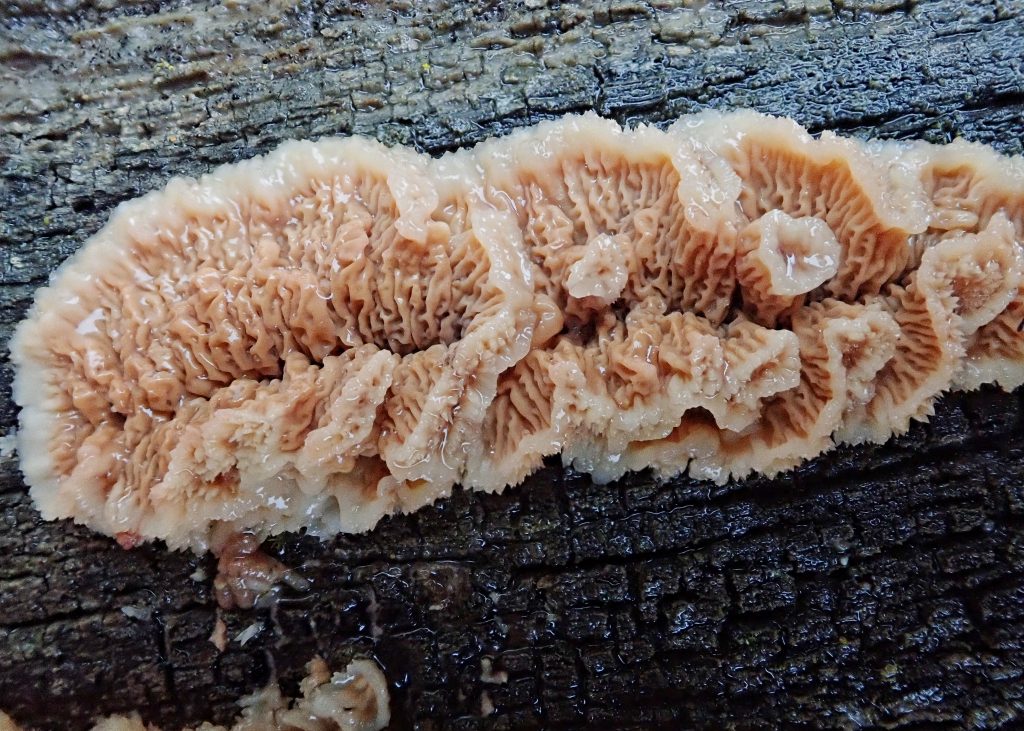
In 1984 (Nakasone/Burdsall), based on morphology, this species was shunted from Merulius into the genus Phlebia, a move which some (Binder et. al., 2013; Justo et. al., 2017) would repudiate based on molecular date. Any movement of this species will complicate the taxonomy of this family, since Merulius tremellosus is the type specimen of that genus, and it is the type genus of the family Meruliaceae, to which Phlebia, and dozens of other genera, belong.
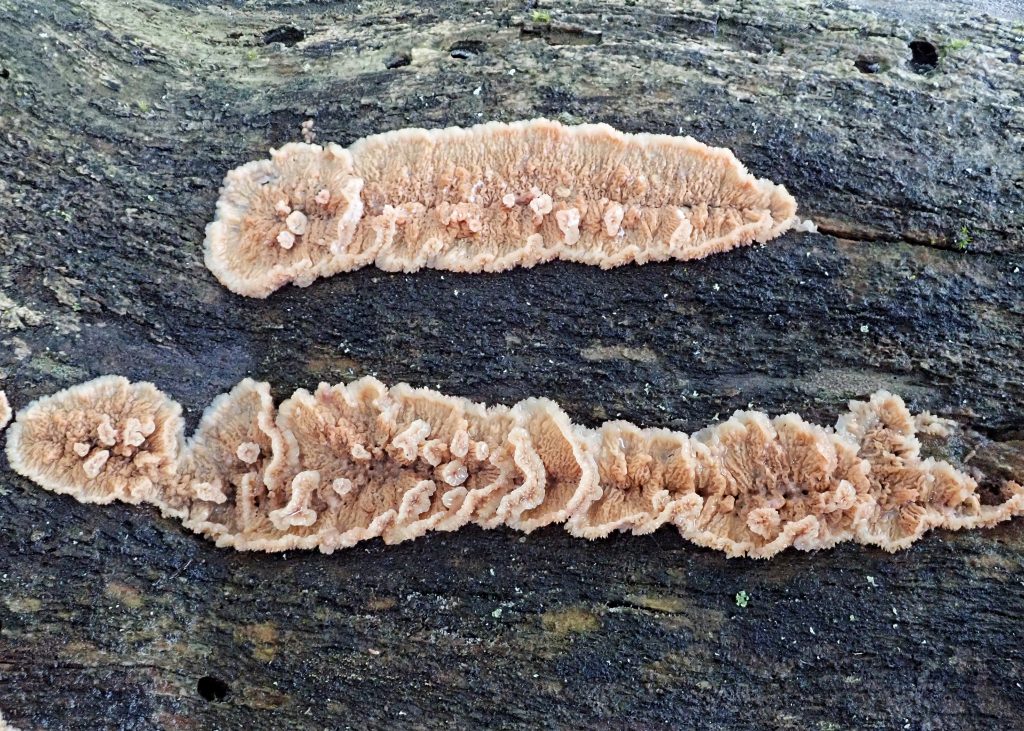
Phlebia tremellosa has been saddled with the evocative but kind of nausea inducing common name of jelly rot, but it has also carried the somewhat twee moniker of trembling Merulius, and the utterly prosaic name gelatinous woodcrust.
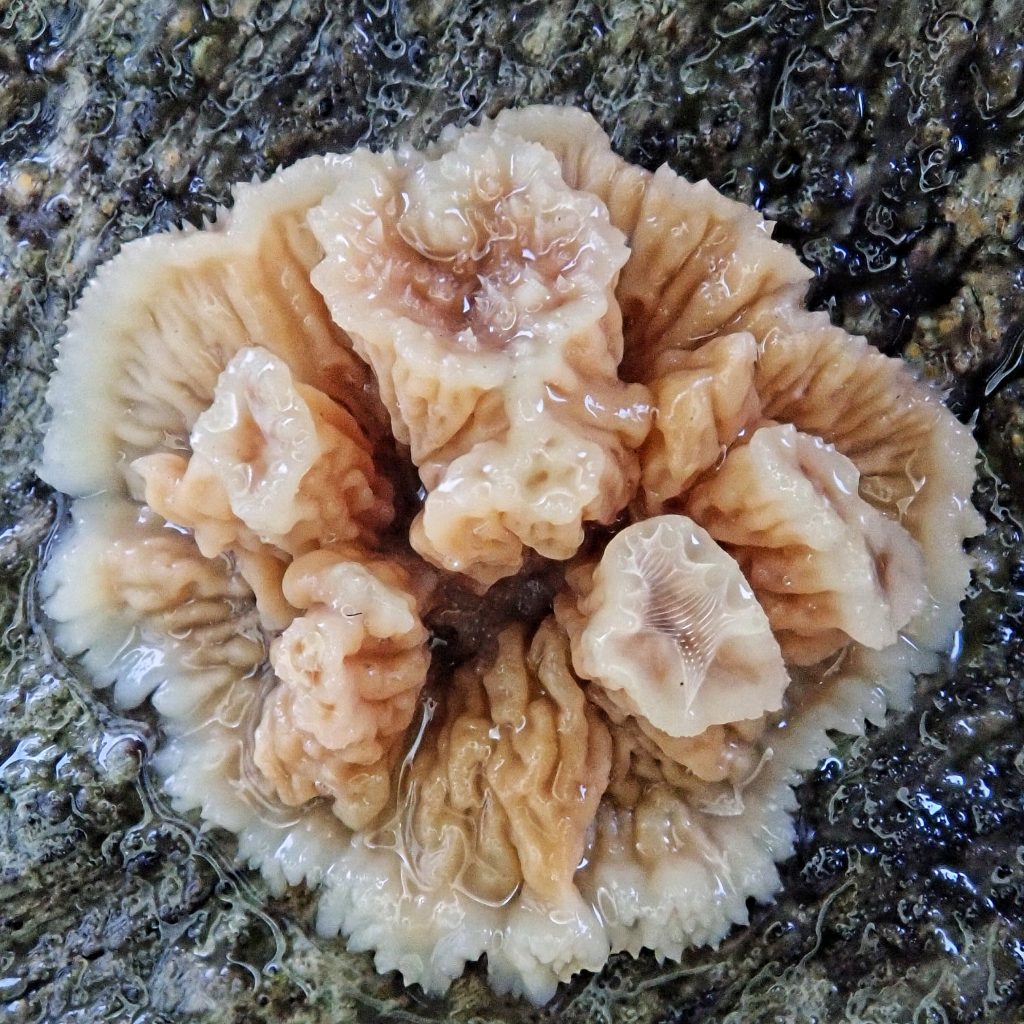
Regardless, one would have a difficult time creating a common name that would do justice to to the intricate structure of folds, ridges, furrows, hairs, and pedestals, that form the surface of this funky fungi. It reminds me of the weather sculpted sandstone of Canyonlands and Arches National Parks in Utah.
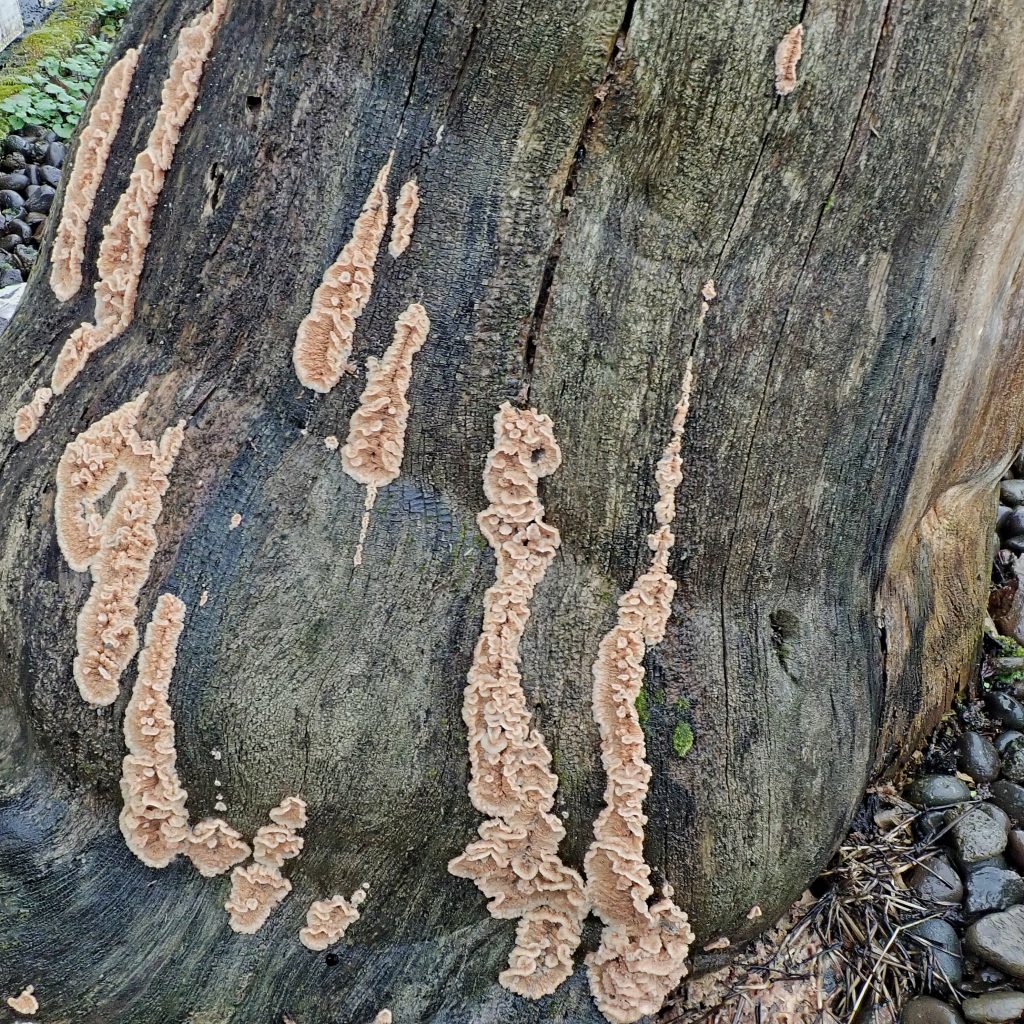
This species is a white rot fungus, but it is saprobic and feeds only on dead wood. It prefers to colonize downed and dead hardwoods, but has been found on conifers. Unlike many other species in the order Polyporales, it is ephemeral, and the fruiting bodies disappear after the are done producing spores
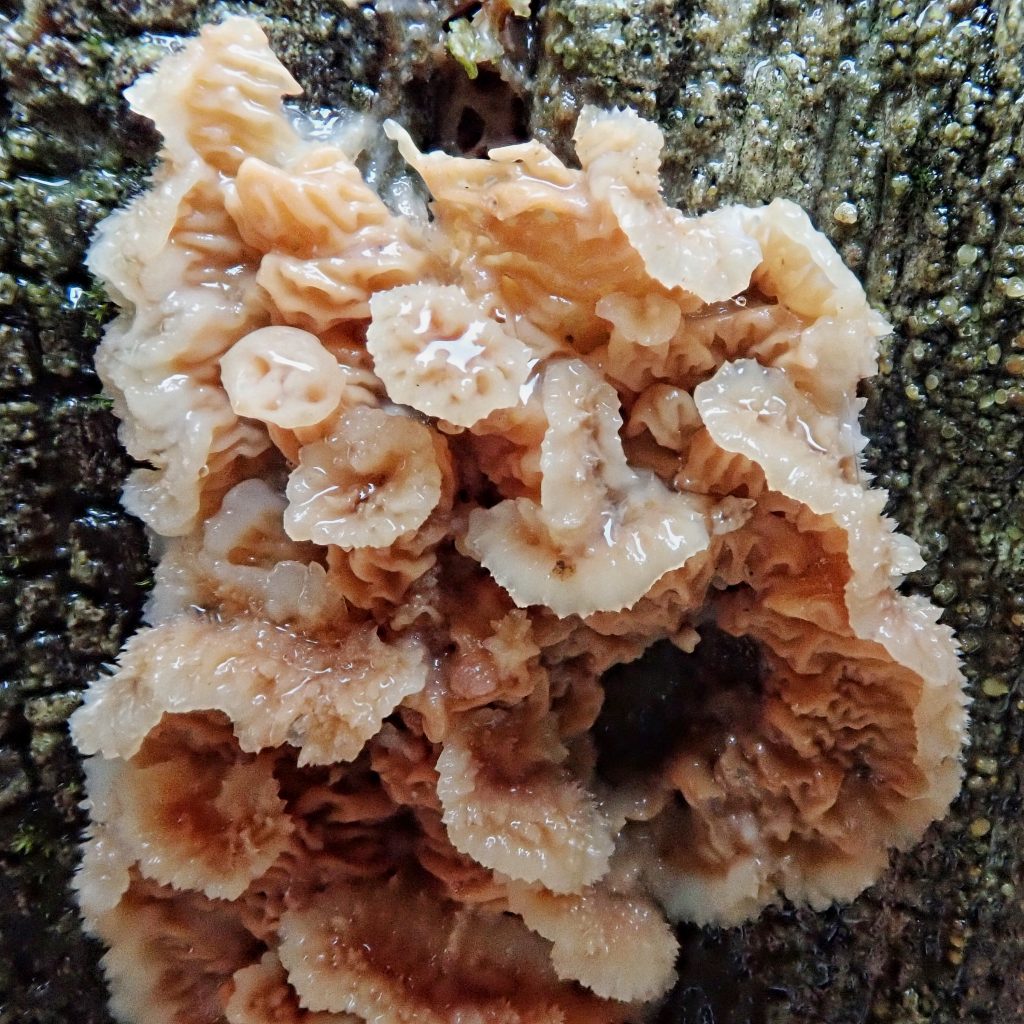
I found this colony growing on a decorative stump in the rock garden of a facility where I was picking up a client. Unfortunately I didn’t have a camera with me. When I returned the next day to take photos the owner of the home was at first very suspicious, and then puzzled by my interest. But they allowed me to photograph it after I showed them this website, and promised not to ‘turn them in’. Whether they were afraid it was endangered, or they thought they were somehow guilty of promoting illegal fungal growth, I can not say.
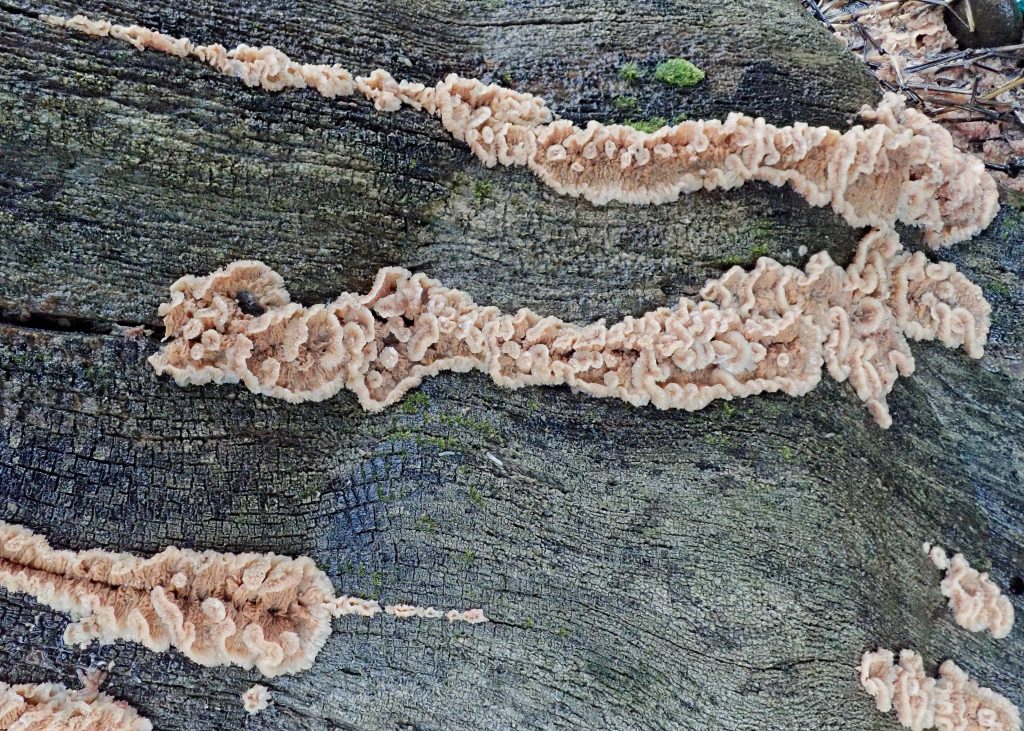
Description– Most commonly encountered as a shelf fungus, it also forms crusts like the one I found; light pink to tan, with varying degrees of ridges, furrows, and pedestals; when mature it will often reflex away from the substrate so that the fertile side faces down.
Similar species– Phlebia radiata, tends to be more colorful, with darker shades of pink/orange/brown, and has a blobby and pimply surface; it also never forms shelves.
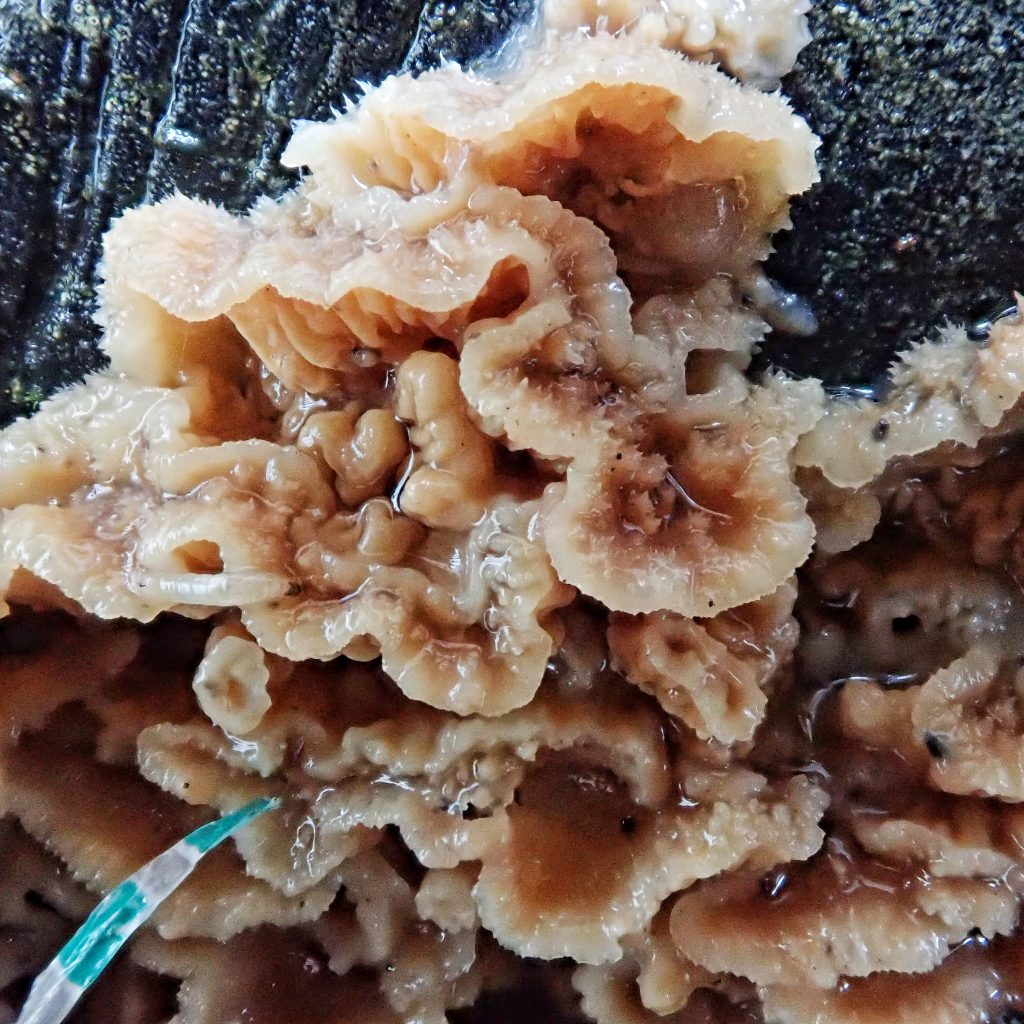
Habitat– Found mostly in damp wooded areas, although it is present in more urban areas due to introduction on firewood and woodchips.
Range– Holarctic; mostly found west of the Cascades in our region.
Reproductive timing– Fall and winter
Eaten by– Considered inedible for humans; it is a larval host for some fungus gnats.
Etymology of names– Phlebia is from the Greek word for veins, and pertains to the vein like structures on the fertile surface of members of this genus. Merulious comes from the Latin for ‘blackbird’. I can not ascertain how this applies to this fungus. The specific epithet tremellosa is from the Latin for ‘trembling’, and refers to the gelatinous texture of this fungi.
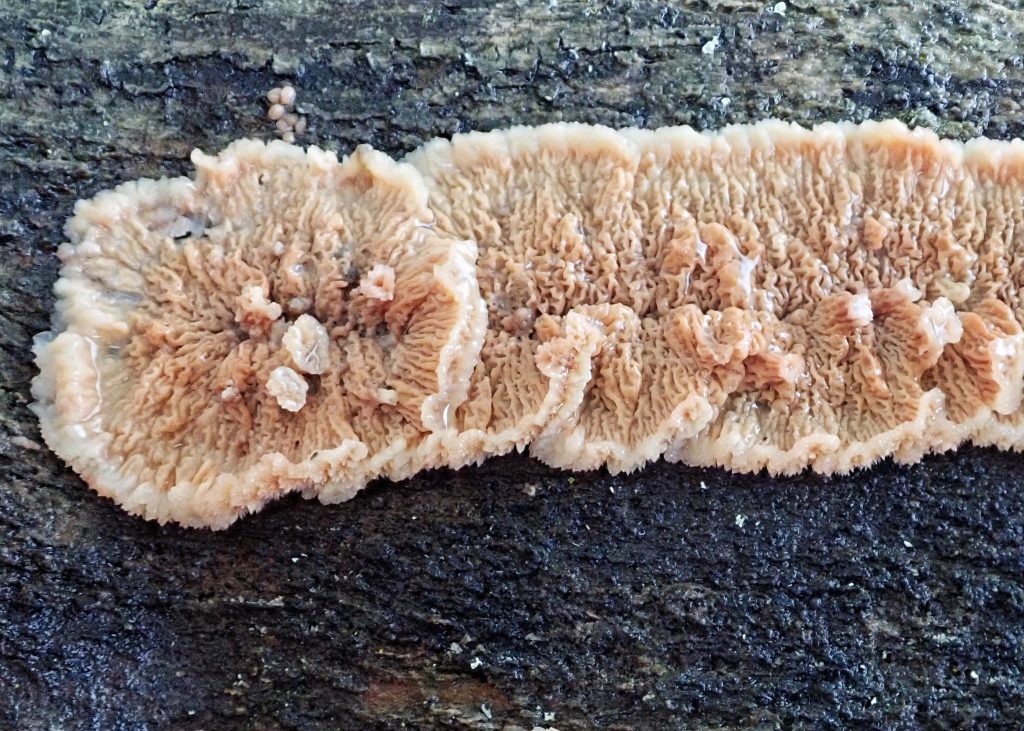
https://www.mushroomexpert.com/phlebia_tremellosa.html
https://www.first-nature.com/fungi/phlebia-tremellosa.php
https://www.messiah.edu/Oakes/fungi_on_wood/poroid%20fungi/species%20pages/Phlebia%20tremellosa.htm
https://www.mykoweb.com/CAF/species/Phlebia_tremellosa.html
https://www.marylandbiodiversity.com/viewSpecies.php?species=10361
http://biology.burke.washington.edu/herbarium/imagecollection/taxon.php?Taxon=Phlebia%20tremellosa
https://www.mycoguide.com/guide/fungi/basi/agar/poly/meru/meru
https://en.m.wikipedia.org/wiki/Phlebia_tremellosa
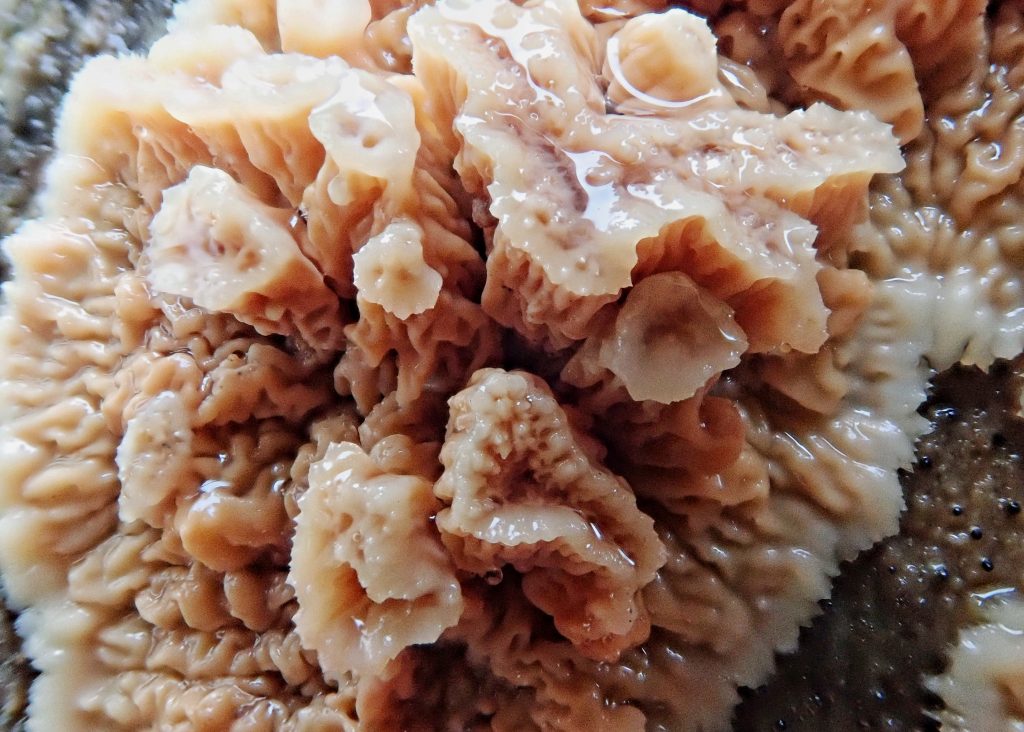
OOOHH, Interesting!!! thanks:)